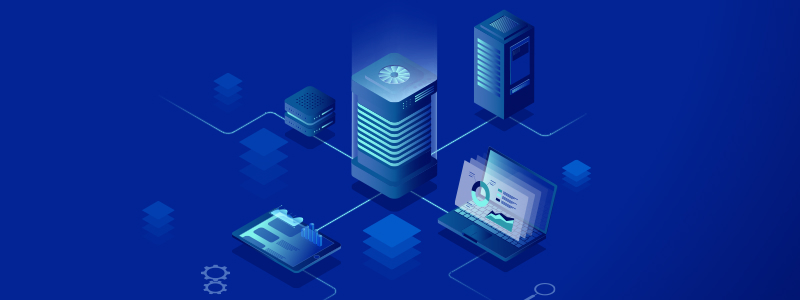
What is Agentic AI? All You Need to Know
Gartner forecasts that by 2028, Agentic AI will be integrated into 33% of enterprise software applications, compared to less than 1% in 2024. This shift will enable 15% of day-to-day work decisions to be made autonomously. Agentic AI is revolutionizing industries by enabling them to act independently and execute tasks without constant human intervention.
But what exactly is agentic AI, and why is it so impactful? In this blog, we’ll explore its core features, applications, and how it’s shaping the future of technology.
What is Agentic AI?
Agentic AI refers to artificial intelligence systems that are designed to act autonomously, making decisions and taking actions to achieve specific goals independently of continuous human oversight. Unlike traditional AI, which often relies on predefined rules or requires human input (AI prompts) for decision-making, agentic AI operates with a higher degree of independence and adaptability through adaptive behavior.
Think of agentic AI as a “smart assistant” that can analyze situations, learn from its environment, and execute tasks proactively. It’s not just reactive—it’s proactive, goal-oriented, and capable of handling complex scenarios. For example, while traditional AI might follow a script to answer customer queries, agentic AI can understand the context of a conversation, predict customer needs, and offer personalized solutions without human oversight.
The shift toward agentic AI is fundamentally tied to the concept of AI agents. Agentic AI emerges when autonomous AI agents are designed with the capability to initiate tasks, set intermediate goals, and make decisions without requiring constant human direction. In this sense, there is no agentic AI without AI agents: agentic behavior is the result of empowering agents with the ability to operate with strategic autonomy.
Key Features of Agentic AI
Agentic AI stands out due to its unique characteristics:
- Autonomy: Agentic AI systems can operate independently, making decisions based on real-time data and changing conditions. For instance, in a manufacturing setting, agentic AI can monitor equipment, predict failures, and schedule maintenance without human intervention.
- Adaptability: These systems learn and evolve over time, improving their performance as they gather more information. This makes them ideal for dynamic environments where conditions change frequently.
- Goal-Oriented Behavior: Agentic AI is designed to achieve specific objectives, whether it’s optimizing a process, solving a problem, or completing a task. For example, in healthcare, Agentic AI can analyze patient data to recommend personalized treatment plans.
- Context Awareness: It can understand and respond to the context of a situation, making it highly effective in dynamic environments. For instance, in autonomous vehicles, agentic AI can interpret road conditions, traffic patterns, and pedestrian behavior to make safe driving decisions.
Agentic AI vs. Traditional AI: A Side-by-Side Comparison
With the ability to act proactively, adapt to changing environments, and handle multi-faceted tasks, agentic AI is transforming industries. Here’s how it differs from traditional AI in functionality and application.
| Aspect | Traditional AI | Agentic AI |
| Input Dependency | Needs human input or prompts | Acts independently with minimal input |
| Task Scope | Single-task or narrowly focused | Multi-tasking and dynamic goal handling |
| Decision-Making | Pre-programmed or reactive | Proactive and strategic |
| Learning Ability | Limited to initial training | Continuous, real-time learning |
| Environment Adaptability | Performs well in controlled settings | Adapts to changing, unpredictable contexts |
| Autonomy | Low; requires human oversight | High; operates independently |
| Complexity Handling | Handles simple, well-defined tasks | Manages complex, multi-step processes |
| Flexibility | Rigid; operates within predefined parameters | Highly flexible; adjusts to new scenarios |
| Example | Chatbots, spam filters | Autonomous assistants, self-driving fleets, AI-driven disaster response systems |
How Does Agentic AI Work?
Agentic AI operates through a series of interconnected steps that enable it to function autonomously and intelligently. These steps mimic human-like decision-making processes, allowing agentic AI to perceive its environment, reason through data, and take appropriate actions. By combining advanced technologies like machine learning, natural language processing, and computer vision, agentic AI can adapt to dynamic environments and perform complex tasks with minimal human intervention. Here’s a concise breakdown of how agentic AI works:
1. Perceive
Agentic AI begins by gathering data from its environment using sensors, cameras, microphones, or other input tools. This step involves collecting raw data, such as visual inputs, audio signals, or text, which serves as the foundation for decision-making.
2. Process
Next, the system processes the collected data by cleaning, organizing, and analyzing it. This step involves identifying patterns, understanding context, and extracting meaningful insights to prepare for decision-making.
3. Reason
Using machine learning and logic-based algorithms, agentic AI evaluates the processed data to make informed decisions. It considers multiple options, predicts outcomes, and selects the best course of action to achieve its goals. This step often involves simulating scenarios or leveraging historical data to optimize decision-making.
4. Act
Finally, agentic AI takes action based on its reasoning. This could involve executing tasks, providing recommendations, or controlling systems. It also learns from feedback, improving its performance over time.
5. Learn
After acting, agentic AI evaluates the outcomes of its actions by gathering feedback from the environment. It uses this information to refine its models, adjust future behaviors, and continuously improve its accuracy and efficiency over time. This learning loop helps the system become more effective in handling similar tasks or adapting to new challenges.
Applications of Agentic AI
Below are some of agentic AI’s most impactful applications:
Healthcare
Agentic AI can assist in diagnosing diseases, recommending treatments, and even performing surgeries with precision. Its ability to analyze vast amounts of medical data makes it a valuable tool for improving patient outcomes. For example, AI-powered diagnostic tools can detect early signs of diseases like cancer, enabling timely intervention.
Customer Service
In the form of intelligent chatbots and virtual assistants, agentic AI can handle customer inquiries, resolve issues, and provide personalized recommendations, enhancing the customer experience. For instance, AI-driven chatbots can handle thousands of customer interactions simultaneously, reducing wait times and improving satisfaction.
Autonomous Vehicles
Self-driving cars rely on agentic AI to navigate roads, avoid obstacles, and make split-second decisions to ensure passenger safety. Companies like Tesla and Waymo are leveraging agentic AI to develop fully autonomous vehicles that can operate without human intervention.
Supply Chain Management
Agentic AI optimizes logistics by predicting demand, managing inventory, and streamlining delivery routes, reducing costs and improving efficiency. For example, AI-powered systems can analyze weather patterns, traffic conditions, and supplier data to ensure timely deliveries.
Finance
From fraud detection to portfolio management, agentic AI helps financial institutions make data-driven decisions and mitigate risks. For instance, AI algorithms can analyze transaction patterns to identify fraudulent activities in real-time.
Benefits of Agentic AI
Below are the key benefits of agentic AI:
- Increased Efficiency: Automates repetitive tasks, freeing up human resources for more strategic work.
- Improved Accuracy: Reduces errors by leveraging data-driven insights and real-time analysis.
- Scalability: Can handle large-scale operations without compromising performance.
- Cost Savings: Lowers operational costs by optimizing processes and reducing waste.
- Enhanced Decision-Making: Agentic AI can analyze vast amounts of data quickly, enabling more informed and accurate decisions in real-time.
- Adaptability: Learns and adapts to new situations, improving performance over time through continuous learning.
- Personalization: Tailors experiences and solutions to individual user preferences, improving customer satisfaction.
- Innovation: Drives innovation by identifying patterns, trends, and opportunities that may not be apparent to humans.
Considerations of Using Agentic AI
While agentic AI offers numerous benefits, it also comes with some challenges:
- Ethical Concerns: Autonomous decision-making raises questions about accountability and bias. For example, if an AI system makes a wrong decision, who is responsible?
- Security Risks: Agentic AI systems can be vulnerable to cyberattacks if not properly secured. Hackers could exploit vulnerabilities to manipulate AI decisions.
- Complexity: Developing and maintaining agentic AI requires significant expertise and resources. Organizations need to invest in skilled professionals and robust infrastructure.
10 Best Practices for Implementing Agentic AI
Implementing agentic AI successfully requires a strategic approach to ensure it delivers value while addressing potential challenges. Here are some best practices to consider when integrating agentic AI into your organization:
- Define Clear Objectives: Identify specific goals and align them with your business strategy.
- Prioritize Data Quality: Ensure high-quality, secure, and unbiased data for accurate AI decision-making.
- Start Small and Scale Gradually: Begin with pilot projects and scale based on feedback and results.
- Invest in Talent and Training: Build a skilled team and upskill employees to work effectively with AI systems.
- Ensure Ethical AI Practices: Address bias, promote transparency, and establish accountability in AI systems.
- Focus on Security: Implement robust cybersecurity measures and conduct regular audits.
- Foster Collaboration: Engage stakeholders and partner with experts for successful AI integration.
- Monitor and Optimize Performance: Track key metrics and continuously improve AI models.
- Ensure Regulatory Compliance: Stay updated on regulations and implement compliance measures.
- Communicate Transparently: Educate stakeholders and build trust through clear communication.
Final Thoughts
The future of agentic AI is here, and it’s transforming how businesses operate—enabling autonomous, adaptive systems that anticipate needs, solve complex problems, and drive innovation. The potential of agentic AI is immense. As technology continues to advance, we can expect agentic AI to become even more sophisticated, capable of handling increasingly complex tasks.
With Astera AI Agent Builder, you can bring this future to your organization. Create and deploy intelligent AI agents effortlessly using your enterprise data in a simple drag-and-drop interface. Whether it’s optimizing workflows, enhancing decision-making, or driving innovation, Astera empowers your team to turn data into actionable AI solutions.
Ready to lead the charge? See how your enterprise can leverage Astera AI Agent Builder to deploy autonomous AI agents .
 Astera AI Agent Builder - First Look Coming Soon!
Astera AI Agent Builder - First Look Coming Soon!


